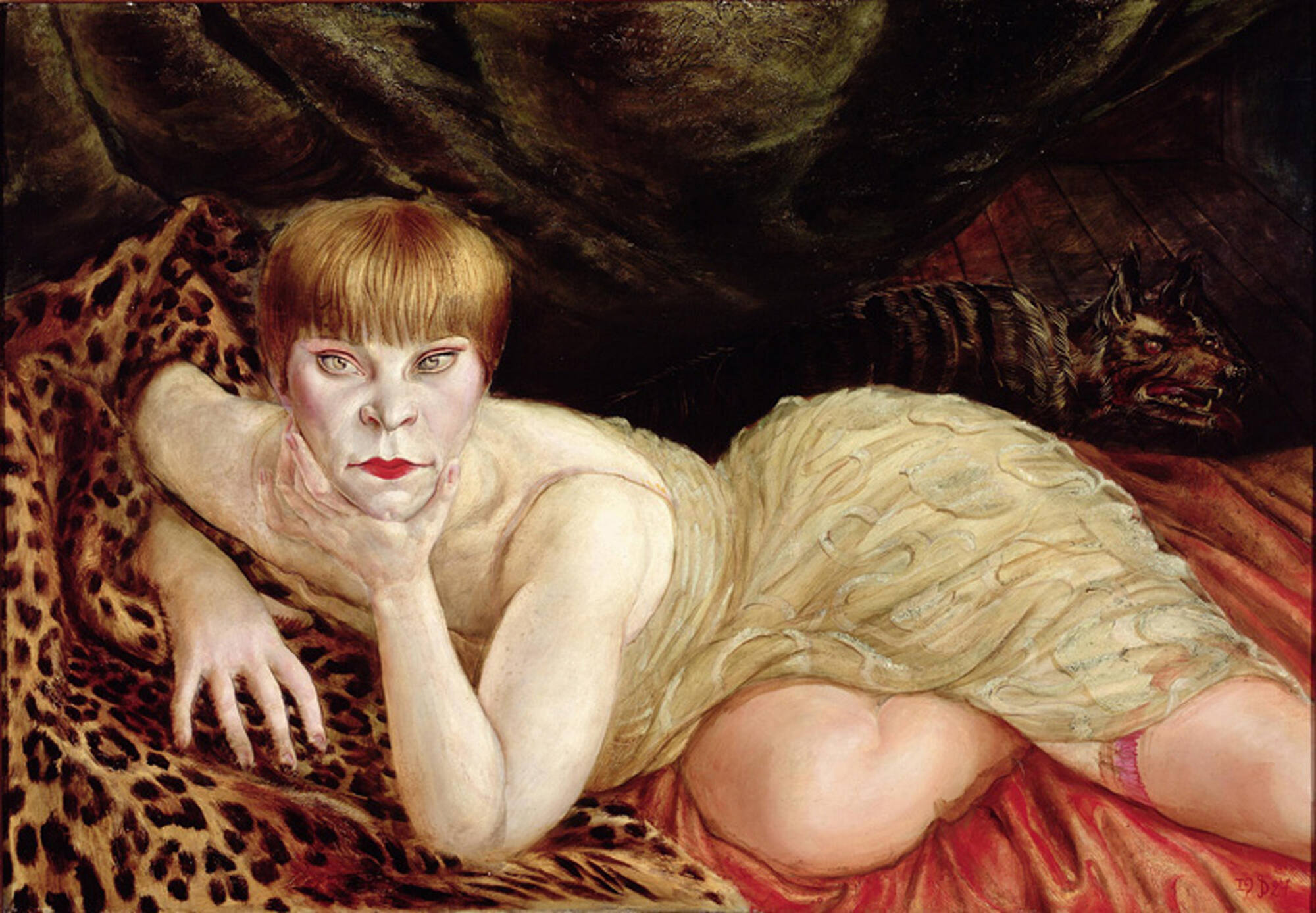Otto Dix
(German, 1891–1969)
Liegende auf Leopardenfell (Reclining Woman on a Leopard Skin)

Object Details
Artist
Otto Dix
Date
1927
Medium
Oil on panel
Dimensions
Panel (including cradle): 27 1/2 × 39 1/2 inches (69.9 × 100.3 cm)
Frame: 35 1/8 × 46 7/8 × 2 7/16 inches (89.2 × 119.1 × 6.2 cm)
Credit Line
Gift of Samuel A. Berger
Object
Number
55.031
Provenance:
1927– collection of the artist. (by 1929– with Galerie Neue Kunst Fides, Dres(…)
Provenance:
1927– collection of the artist. (by 1929– with Galerie Neue Kunst Fides, Dresden); (1929 with Kunstsalon Wolfsberg, Zurich (exhibited in Sonder-Ausstellung: Otto Dix, Feb–Mar 1929, curated by Galerie Neue Kunst Fides)). 1929–1930 collection of the artist. 1930– Shown at the Biennale di Venezia XVII, German National Pavilion, under the name “Ragazza giacente”; 1930–probably after 1949– collection of the artist. (n.d. with Galerie Commeter, Hamburg, with inventory number 2032 written on paper label). (n.d. with Gustav Knauer, Kunst-Abteilung, Berlin, with inventory number 3292 printed on a paper label) . n.d.–1955– collection of Col. Samuel A. Berger (1882–1972), New York; 1955 collection of Andrew Dickson White Museum of Art (1953–1973) (now the Herbert F. Johnson Museum of Art) Cornell University, Ithaca, NY (gift of Samuel A. Berger)
——
Severe economic hardship and a widespread sense of social dislocation led many German artists in the years between the wars to create images of contemporary disillusionment and decadence. Otto Dix and George Grosz became known as the leading figures in the movement called Neue Sachlichkeit (New Objectivity). Distinct from the preceding generation of German Expressionists, these artists emphasized urban activity and collective, rather than personal, beliefs. New Realism artists often attacked the society that they felt perpetuated inequalities, but they also delighted in presenting its attractions on occasion. In this painting, Dix depicts the actress Vera Simailova, whose fashionable androgyny, feline stare, and animal crouch create an odd fusion of repulsion and seduction, opulence and vulgarity.
“Reclining Woman on a Leopard Skin” is one in a number of penetrating portraits Dix made during the 1920s, the decade of his best Neue Sachlichkeit portraits. In all these works, Dix’s experimental technique of mixing tempera pigment in oil and applying it to wood panel recalls German Renaissance practices seen in the art of such old masters as Dürer, Cranach, and Grünewald. Also reminiscent of German art of the sixteenth century was his precise use of line and sense of airless space. All of these characteristics were perhaps a response to the previous movement of German Expressionism as seen in the Die Brücke and Der Blaue Reiter groups.
From “A Handbook of the Collection: Herbert F. Johnson Museum of Art” (1998)












